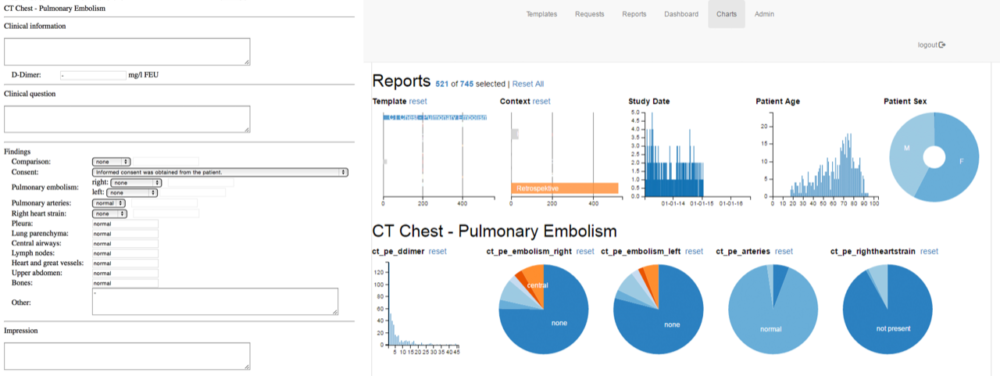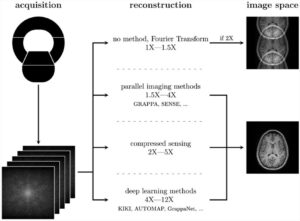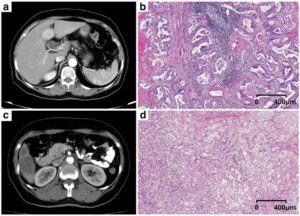Imagine you wanted to teach a baby to differentiate a ball from a dog. How would you do that? Intuitively it would make sense to repeatedly point at them while naming each object accordingly. But how about, e.g. if instead of saying “dog” or “ball”, you would only name the specific breed of dog without using the word “dog”? Maybe even sometimes not pointing at the dog but at the ball instead? Well, probably it would take substantially longer for the child to make sense of the given information.
The same applies to recent developments and research efforts in artificial intelligence (AI) and machine learning in radiology [1]. The main problem, especially in radiology, is that the vast majority of today’s radiology reports are only available as unstructured narrative texts. This is a substantial challenge if a large dataset of structured and accurately labeled image data is needed, as it is the case in the development of AI algorithms. Of course, natural language processing can help overcome this hurdle but has a number of problems of its own [2]. Mainly, because of the large variation in language and style across different radiologists (recommended read [3]). If you want to follow the example above, this can be compared to using dog breed names and pointing at either the dog or the ball.
Continuing with the example above, it would be beneficial to only use a structured and consistent vocabulary. This could, potentially, be achieved by using data from structured reports, ideally combined with a standardized ontology. ESR and RSNA have both been promoting the adoption of structured reporting in clinical routine for a long time [4,5]. Interoperable standards have been defined and are freely available (IHE MRRT [6]), also report templates are available under an open license in a joint template library [7]. Apart from its potential use for the development of AI algorithms there is quite a large evidence that structured reporting also improves report quality and readability [8].
Successful implementation of structured reporting in daily routine could really be the “fusion reactor” to power the future of radiology [9].
Read more about this topic in “Big data, artificial intelligence, and structured reporting” [10].
Key points:
- Structured radiological reporting has the potential to facilitate research and development in machine learning for radiological applications
- Interoperable standards for structured reporting are available
- However, implementation of structured reporting in clinical routine is still scarce
Article: Big data, artificial intelligence, and structured reporting
Authors: Daniel Pinto dos Santos and Bettina Baeßler
References
[1] Sophos News, https://news.sophos.com/en-us/2017/09/21/man-vs-machine-comparing-artificial-and-biological-neural-networks/ Last accessed 19 February 2019
[2] Pons E, Braun LMM, Hunink MG, Kors JA (2016) Natural language processing in radiology: a systematic review. Radiology 279:329–343
[3] Luke Oakden-Rayner, https://lukeoakdenrayner.wordpress.com/2017/12/18/the-chestxray14-dataset-problems/ Last accessed 19 February 2019
[4] Morgan TA, Helibrun ME, Kahn CE Jr (2014) Reporting Initiative of the Radiological Society of North America: progress and new directions. Radiology 273:642–645
[5] European Society of Radiology (2017) ESR paper on structured reporting in radiology. Insights into Imaging 9:1-7
[6] Integrating the Healthcare Enterprise (IHE), https://www.ihe.net/uploadedFiles/Documents/Radiology/IHE_RAD_Suppl_MRRT.pdf Last accessed 19 February 2019
[7] RadReport, http://radreport.org Last accessed 19 February 2019
[8] Brook OR, Brook A, Vollmer CM, Kent TS, Sanchez N, Pedrosa I (2015) Structured reporting of multiphasic CT for pancreatic cancer: potential effect on staging and surgical planning. Radiology 274:464–472
[9] Bosmans JM, Neri E, Ratib O, Kahn CE Jr (2015) Structured reporting: a fusion reactor hungry for fuel. Insights Imaging 6:129–132
[10] Pinto dos Santos D, Baeßler B (2018) Big data, artificial intelligence, and structured reporting. Eur Radiol Exp 2:42













